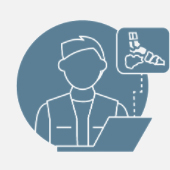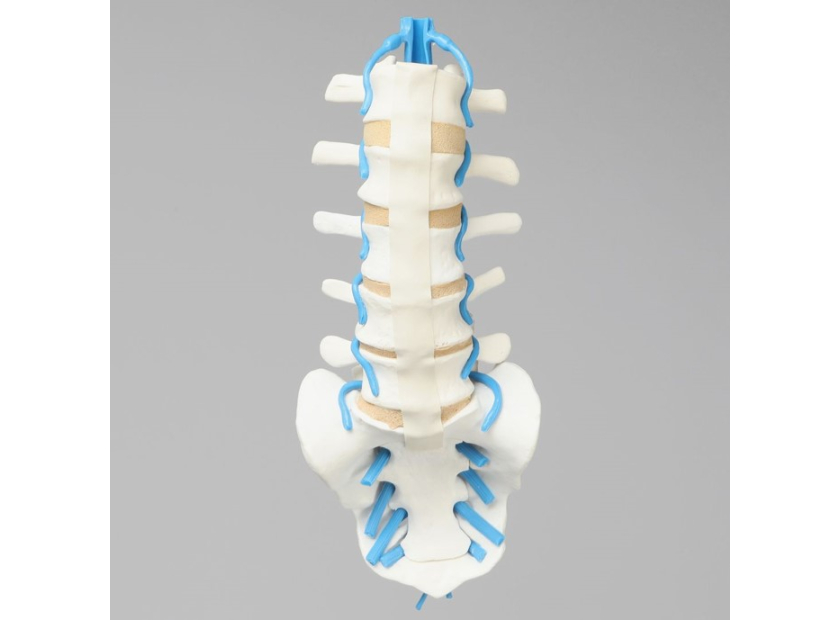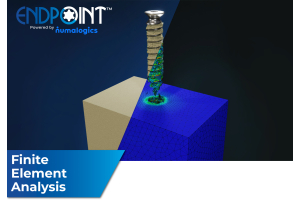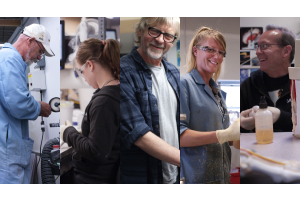Why Lumbar Vertebrae Anatomy Training Is More Than Just Biomechanics
Lower back pain is one of the most common ailments in the world. In the US alone, about one-quarter of adults report at least some occasional issues. Considering how much the lumbar spine has to support, that's no real surprise. Any medical professional will need to become familiar with the diagnosis and treatment of lumbar vertebrae anatomy issues to care for patients or to refer to the proper specialist.
However, the need for knowledge goes beyond the bones that hold the spine together. Everything in the lower back interconnects with other nerves, discs, muscle groups, ligaments, and blood vessels. It's vital to understand how all these systems work together to provide treatment. Medical education models must be comprehensive and clear.
Critical Components of Lumbar Vertebrae Anatomy
Lumbar vertebrae are only a tiny component of the overall lower back. Injuries to the vertebrae themselves are less common than conditions that occur around them and can lead to ongoing pain and dysfunction. Five primary systems require study alongside lumbar vertebrae anatomy:
Nerves |
Intervertebral discs |
Muscles |
Ligaments |
Blood vessels |
|
The spine incorporates a plethora of essential nerves and systems. These nerves branch off the spinal cord or the cauda equina and are responsible for sensation and movement throughout the body. Damage to vertebrae can impact one or more of these key nerves and cause radiating pain, numbness, and dysfunction. |
Intervertebral discs provide necessary protection for the ends of the vertebrae and cushion the impact that occurs through regular movement. Damage to these discs can cause injury to the vertebrae and vice versa. Herniations and displacements can also affect nerves within the spinal cord, as all of these are interconnected. |
The lumbar vertebrae contain several vital muscles necessary for human movement. The psoas major, quadratus lumborum, and more are responsible for the spine’s rotation, flexion, and extension. All these can be adversely impacted by an injury to the lumbar vertebra. An injury to the muscle outright can also cause vertebrae misalignment. |
The spine is home to several key ligament groups, including anterior and posterior longitudinal ligaments, the ligamentum flavum, the interspinous ligament, and the supraspinous ligament. Specific to the lumbar region are the iliolumbar ligaments, which provide stability and function to the lumbosacral joint. |
The single anterior spinal artery and the two posterior spinal arteries are primarily responsible for providing the necessary blood supply to the lumbar region. Injuries to the lumbar vertebrae can impact either of these critical vessels and create severe medical conditions that require immediate treatment. |
The lumbar spine is tricky because it's not unusual for individuals to have completely asymptomatic conditions. For example, about 20% of asymptomatic young adults and 75% of individuals over 70 show disc bulges in medical imaging. However, these incidental findings may not have any responsibility for their pain whatsoever. Good surgical demonstration models will incorporate all the above systems to allow residents to locate conditions causing pain while ruling out unimportant issues.
Going Beyond Biomechanics with Training Features
Accurate movement of the spine is an important medical education model feature, but that's only a tiny component. Proper training requires a comprehensive demonstration display that features:
- Contrasting nerves, ligaments, and muscles: In early education, it's crucial to have contrasting spinal models to allow trainees to understand how the muscles, nerve roots, ligaments, and more interact with the vertebrae. This will help them accurately diagnose common issues like radiating pain and numbness localized in a specific part of the lower extremities.
- Standard medical tools: Dura tears are common during surgery, and any surgeon should know how to repair them on the fly. Training models may come with tools like gravity drip lines and fittings, so residents can practice these repairs with accuracy while learning how to complete them rapidly.
- Radiopaque properties: Medical imaging practice requires properties that will show up in an x-ray. Radiopaque properties allow trainees to go over imaging with realistic results. While this isn't necessary for all models, it's helpful to have at least a few—
featuring common lumbar spine injuries—for demonstration.
- Accurate injuries and ailments: Stenosis, osteoarthritis, herniated discs, and spondylolisthesis are common issues that doctors specializing in the lumbar spine will see. It's vital to use models that accurately display these conditions to ensure proper diagnostic training.
- Pelvis attachments: Spine issues often create problems with the pelvis as well. Models that include both the pelvis and the spine help students understand the connection of injuries. It's smarter to use models that display both genders, as there are significant differences between male and female pelvises to include the width of the pelvic girdle, depth of the pubic arch, and more.
- Soft tissue: Doctors don't operate on skeletons. They have to understand soft tissue and how it can limit their ability to reach certain areas. More advanced trainees will benefit from models that include realistic soft tissue coverings. Ideally, these should be replaceable to allow for mistakes.
Lumbar vertebrae anatomy is more than just the study of the bones that make up the spine. There are many interconnected systems to consider. Detailed medical models help residents gain an in-depth understanding of the lower back so they can alleviate patient pain and improve quality of life.
Sawbones models go beyond lumbar vertebrae anatomy with detailed features, injuries, and medical tools. We also offer radiopaque models for medical imaging training. To learn more, contact us at 206-463-5551.

Our engineers, cultivated through our partnership with Pacific Research Laboratories, access a wide range of processes and tools to develop medical educational supplies for universities, hospitals, research and development, and more. Our years of experience creating these products allow us to make stock and custom models for all purposes.









